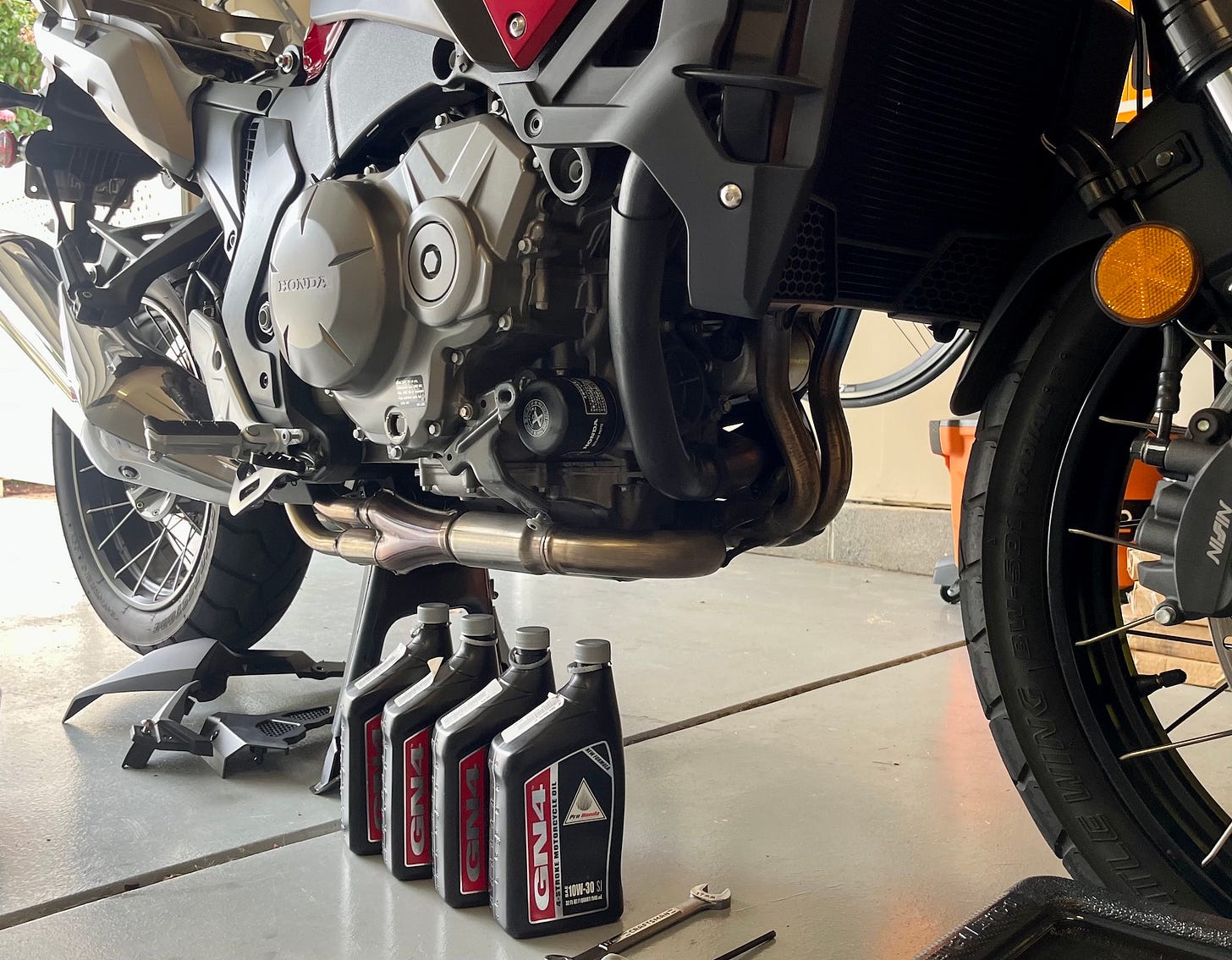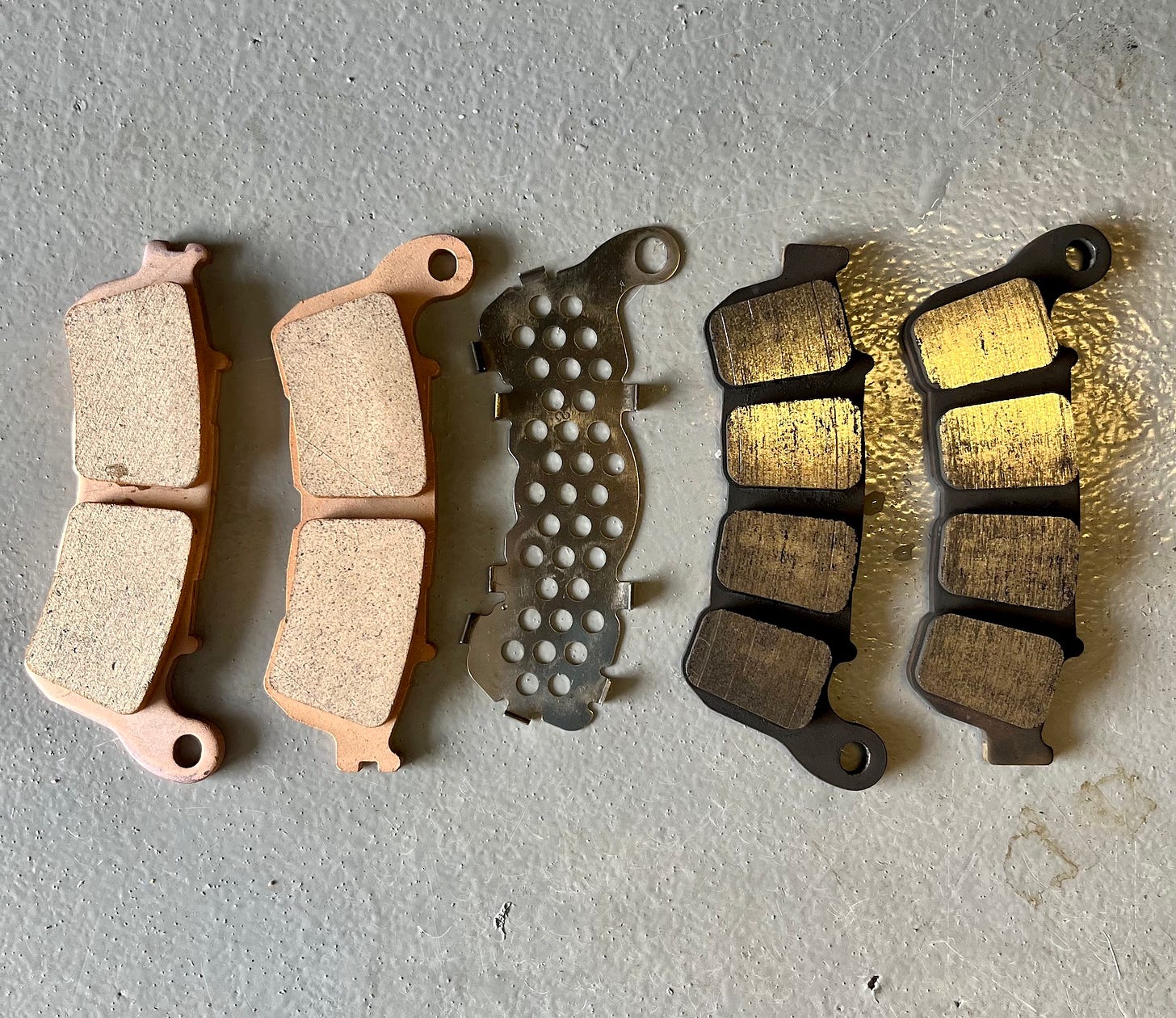After moving four times in the past three years, I finally have access to my tools and a space to maintain my bicycles and motorcycles. During the years I wrote for Cycle World magazine, I had three V-four Honda long-term test bikes—two VFR800s and a VFR1200F DCT. All were wonderful machines, so purchasing a new-in-the-crate Candy Red 2017 VFR1200X adventure-tourer three years ago was an easy decision.
Last year, I rode my VFR1200X from Raleigh, North Carolina, to Pittsburgh International Race Complex in Wampum, Pennsylvania, for the MotoAmerica races—an 1,100-mile round trip. Before this year’s ride, I penciled in routine maintenance, namely oil and filter service. I also looked into replacing the stock front brake pads.
Servicing fully faired sportbikes can be an exercise in frustration. Here is an extreme and likely outdated example: The late-1990s Yamaha YZF600R had 28 screws securing the plastic panels. That is not the case with the long-legged version of the VFR: After removing the molded lower surround—two hex-head bolts and one rivet push pin—I had unimpeded access to the spin-on filter and drain plug, as well as the radiator reserve tank.
In fact, only two tools are required for the oil change: a 5mm hex key and a 17mm wrench. Fast Funnel sent me a sample of its namesake product many years ago, and I have been buying the handy disposable paper funnels ever since. After draining the oil and replacing the filter, I slid the small end of the funnel into the filler hole on the right side of the engine and poured in the prescribed 3.5 quarts of Pro Honda GN4 10W-30 oil. Nary a drop spilled.

The front brake pads weren't worn enough to warrant replacement, but I wanted a different compound with more initial bite than the original-equipment pads provided—one of the VFR’s few shortcomings. Larry Mills, president of DP Brakes, and I had a reunion of sorts earlier this year at the Loudon Classic, so I asked about an application for the VFR1200X.
I was interested in the SDP Sport HH+ compound, which I used with success on other bikes. “We only offer pads [for the VFR1200X] in DP Standard material,” Larry said, “which should be an upgrade over stock.” This highlights one of the downsides to motorcycles that didn’t sell particularly well or are oddly spec’d: Aftermarket alternatives to the original design are somewhat limited.
Installation was a snap. I loosened and removed the bolts retaining the calipers and stock pads, and removed the pads. I cleaned the calipers, snapped the thin backing plates onto the new pads located opposite of the trio of pistons, pressed the pads into place, and reinstalled the retaining bolts and calipers using the original hardware. Required tools? A ratchet with 8mm and 12mm sockets.
DP Brakes says the DP Standard Compound lasts longer than its OE-replacement competition. Other claims: low brake dust, no noise, and no thermal-cycle bedding-in. I will need more time and miles to verify the durability claims, but in 1,150 miles, I never once encountered pad squeal and the calipers were virtually dust-free upon my return home.

Even more to my liking, I was able to move the span-adjustable lever one step closer to the handlebar and brake with a single finger. I didn’t encounter any fade, either, even when repeatedly slowing the 600-plus-pound machine from high speeds. Feel is so good that I felt confident trail braking deep into bumpy corners. In my book, that is success.
I am not a master mechanic, but this recent round of bike maintenance could not have gone more smoothly, which is not always the case. Former CW colleague Peter Egan touched on this subject in one of his columns. “In any case, I’ve found the best substitute for skill is to work alone. That way, no one knows you’re not at one with the serene, clock-like machinery of the universe. Or how much you swear.”


Love seeing your words again, Matthew. Keep ‘em coming.